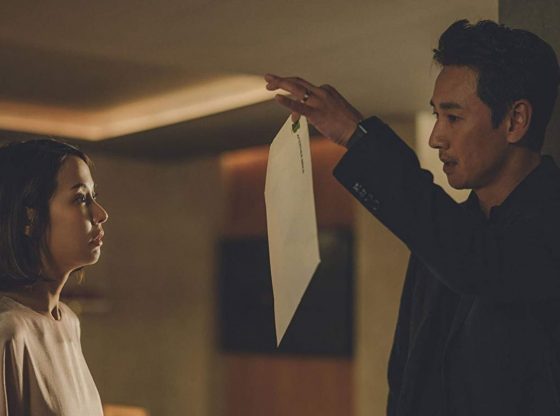What follows, as it did last year, and the year before that, is what the Oscars would like like if a critics group consisting of graduate students from the Film and Media and Cultural Studies programs at the University of Wisconsin-Madison were (rightfully) given control of the show. Outcomes were determined using a simple preferential balloting system. We believe that the resulting awards offer an honest, well-considered overview of what made 2019 such a varied and rewarding year of cinema. Below, then, you will find our nominees and winners for each category, as well as a short write-up about each of the winners. And be sure to check back next week for a post discussing some of our more unique nominees.
Many thanks, of course, to our record-breaking nineteen participants this year: John Bennett, Tim Brayton, Kait Fyfe, Pauline Lampert, Jackie Land, Jacob Mertens, Dillon Mitchell, Erica Moulton, Nate Mulder, Laura Schumacher, Matt St. John, Lance St. Laurent, Anthony Twarog, Will Quade, David Vanden Bossche, Tom Welch, Lauren Wilks, Zach Zahos, and me. You are all as brilliant and interesting as you are generous with your time. — JJ BERSCH
Best picture

- Parasite
- Portrait of a Lady on Fire
- Little Women
- Uncut Gems
- The Irishman
- Once Upon a Time… in Hollywood
- The Farewell
- Pain and Glory
- Hustlers
- Transit
Now that we’ve reached this point, this blessed moment where Bong Joon-ho is a stateside celebrity with multiple blank checks to cash, where your 11-year-old cousin posts “Jessica, Only Child, Illinois, Chicago” TikToks, where Song Kang-ho counts Hollywood royalty among his growing legion of supporters, where you can never look at a basement staircase without seeing those eyes, where your meekest high school classmates are proudly tweeting “Eat. The. Rich!” above a still of Lee Jeong-eun, and where one Palme d’Or winner catapults the thriving film industry of South Korea from zero Oscar nominations to SIX, it’s probably smart to backtrack a bit and consider why we got here. Well, one reason is simple: Parasite is a pretty great movie, a slick and stylish thriller that is equal parts funny, moving, and classically entertaining, a fast-paced and twisty exercise in borderless genre filmmaking that nails all the little details, too. But then, of course, Parasite is also a pretty big phenomenon, a mainstream treatise on capital and class (“So metaphorical.”), a thrilling discussion piece to agree with and argue against, an off-beat marching drum for a hopeful 2020 despite being a forthrightly bleak and pessimistic movie. There were plenty of great films released in 2019, but, as nebulous as it may sound, none of those great films captured and remained in the public consciousness quite like Director Bong’s did. — JJ BERSCH
ACTRESS IN A LEADING ROLE
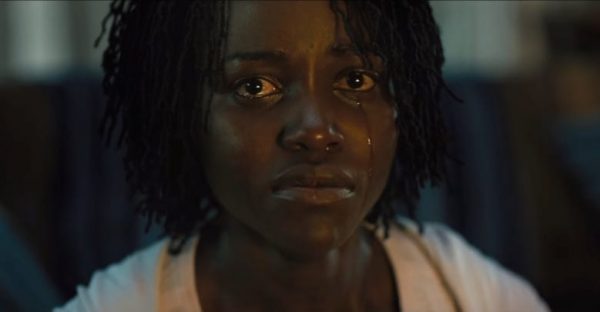
- Lupita Nyong’o, Us
- Awkwafina, The Farewell
- Noémie Merlant, Portrait of a Lady on Fire
- Saoirse Ronan, Little Women
- Zhao Tao, Ash Is Purest White
Us maintains a delicate balance throughout its runtime—between horror and dark humor, social commentary and intimate drama. And that balance relies a great deal on Lupita Nyong’o’s searing lead performance(s). Whenever she’s on screen, you feel a tension burning beneath the surface. You see a calculating anxiety behind her every gesture, every glance. In a film that explores the tensions of black identity and what one chooses to express or hide away, Nyong’o manages to betray all of her emotions and none of them at once. James Baldwin once wrote: “To be a Negro in this country and to be relatively conscious, is to be in a rage almost all the time. So that the first problem is how to control that rage so that it won’t destroy you.” He wrote that almost sixty years ago. In a way, Nyong’o’s performance helps to show us just how relevant that sentiment still is. — JACOB MERTENS
Actor in a Leading Role
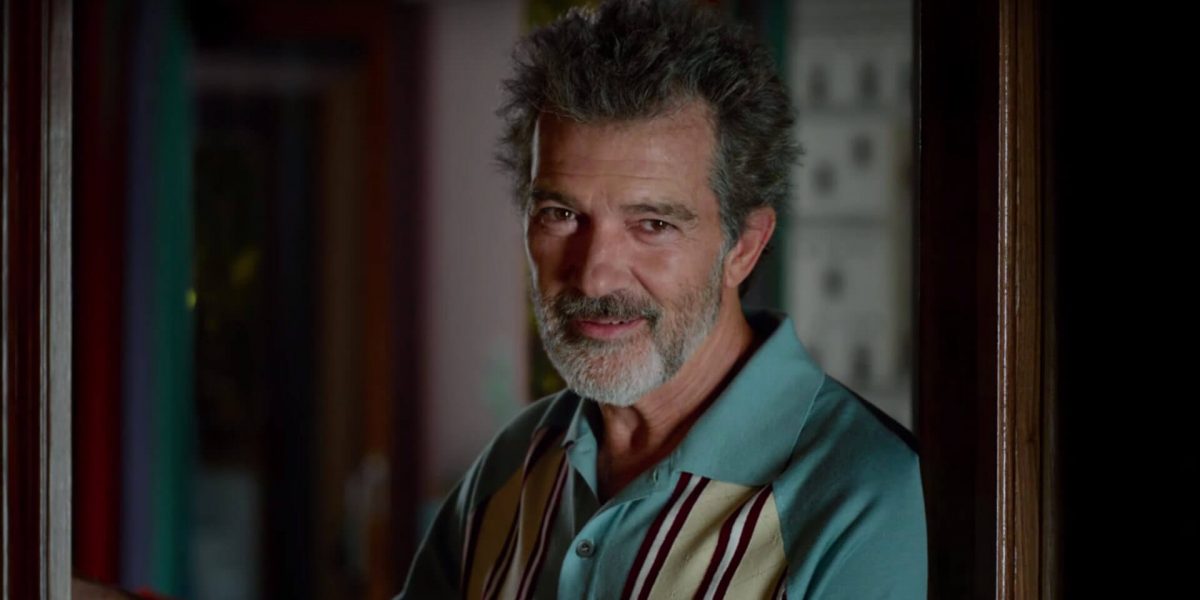
- Antonio Banderas, Pain and Glory
- Adam Sandler, Uncut Gems
- Adam Driver, Marriage Story
- Paul Walter Hauser, Richard Jewell
- Taron Egerton, Rocketman
Antonio Banderas’ first role in an Almodóvar feature was in the 1982 farce Labyrinth of Passion. He played Sadec, a young terrorist who sleeps with a prince in disguise. For the next decade, Banderas was Almodovar’s go-to maniac, turning in performances as stalkers, kidnappers, and murderers, save for his one role as a hapless boyfriend in Women on the Verge of a Nervous Breakdown (1988). The two parted ways in the 1990s as Banderas went to Hollywood while Almodóvar continued to direct in their native Spain. After reuniting in 2011 for The Skin I Live In (in which Almodovar found a new shade of maniac for Banderas to play—a mad scientist), their latest joint venture, Pain and Glory, represents a new chapter for both artists. Banderas’ performance as Salvador Mallo, a fading film director sifting through his childhood memories, mirrors Almodovar’s experiences, from his provincial upbringing, his fraught relationship with his mother, and his desire to rekindle artistic ties with past collaborators. It is one of Banderas’ quietest, least showy performances. He keeps the glint of creative energy just visible behind the downcast eyes and hunched shoulders that convey Salvador’s years of physical and emotional trauma. It’s a remarkable and devastating performance that provides the ballast needed for Almodóvar to craft one of the finest melodramas ever realized onscreen. — ERICA MOULTON
Actress in a Supporting Role
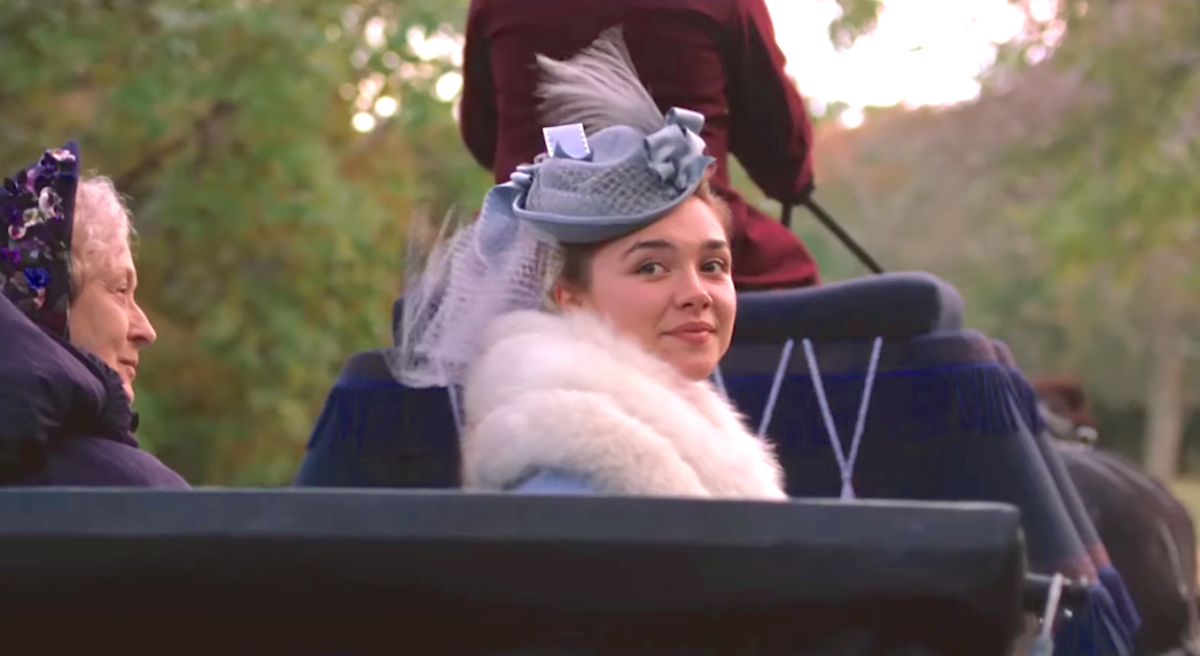
- Florence Pugh, Little Women
- Jennifer Lopez, Hustlers
- Cho Yeo-jeong, Parasite
- Adèle Haenel, Portrait of a Lady on Fire
- Park So-dam, Parasite
One of the most incredible parts of Greta Gerwig’s take on Little Women is how it so successfully repositions Amy March not as a spoiled brat who acts out but as a self-assured young woman stuck in the shadow of her scene-stealing sister Jo. Florence Pugh, acting with and against Gerwig’s muse Saoirse Ronan, captures that minute shift in characterization perfectly. Ronan’s Jo still gets the major monologues that show up in the film’s trailers, but Pugh’s quieter performance is geared toward capturing her character’s simultaneous idolization and resentment of her older sister. Sure, she wants to be great, or nothing, and she delivers that line with maximum effect, but watch Amy’s eyes as she burns Jo’s writings and resists apologizing for it. The emotion that runs across her almost impossibly still face in those moments is a testament to Pugh’s skill and Gerwig’s restraint with her actors. — DILLON MITCHELL
Actor in a Supporting Role

- Brad Pitt, Once Upon a Time… in Hollywood (tie)
- Al Pacino, The Irishman (tie)
- Joe Pesci, The Irishman
- Song Kang-ho, Parasite
- Willem Dafoe, The Lighthouse
“I’m a cinematography geek,” said Brad Pitt during one of his many press junkets last year. “So are we,” said all of us when viewing any shot containing Brad Pitt in Once Upon a Time… in Hollywood. It goes without saying that part of it is that he’s just so hot. So hot in that unbuttoned yellow Hawaiian shirt, so hot shirtless on that roof, so hot in that denim-on-denim outfit feeding his dog or doing literally anything at all. But the hotness has a point here: Pitt exudes movie star charisma in a way he never quite has before, obliterating the narrative that he’s a character actor trapped in the body of a movie star by … playing a man with a movie star’s body who never got the chance to be even a character actor, let alone a leading man. The genius of Tarantino’s movie lies in the way it intertwines and deviates the arcs of Pitt’s Cliff Booth and Leonardo DiCaprio’s Rick Dalton: the latter is a washed-up star who does his best work as a scene-stealing, kid-kicking scoundrel, the former is a luminous, magnetic stunt double shrouded in the shadows of his dark past. Both of these men are near or past their expiration date (outside of Italy, at least), but only one of them ever really had their moment. This makes Booth (along with Margot Robbie’s incandescent Sharon Tate) the thesis statement for the film’s radiant sense of melancholy: he embodies the glamor, the loss, the lies, the ugliness, and the nostalgia of the film’s byegone era. It’s transfixing, but also sad, and probably in the end bad, what we feel for Cliff Booth. Thankfully our relationship with this glorious current incarnation of Brad Pitt, the kind of actor for whom the movies were invented, is much less complicated. — JJ BERSCH
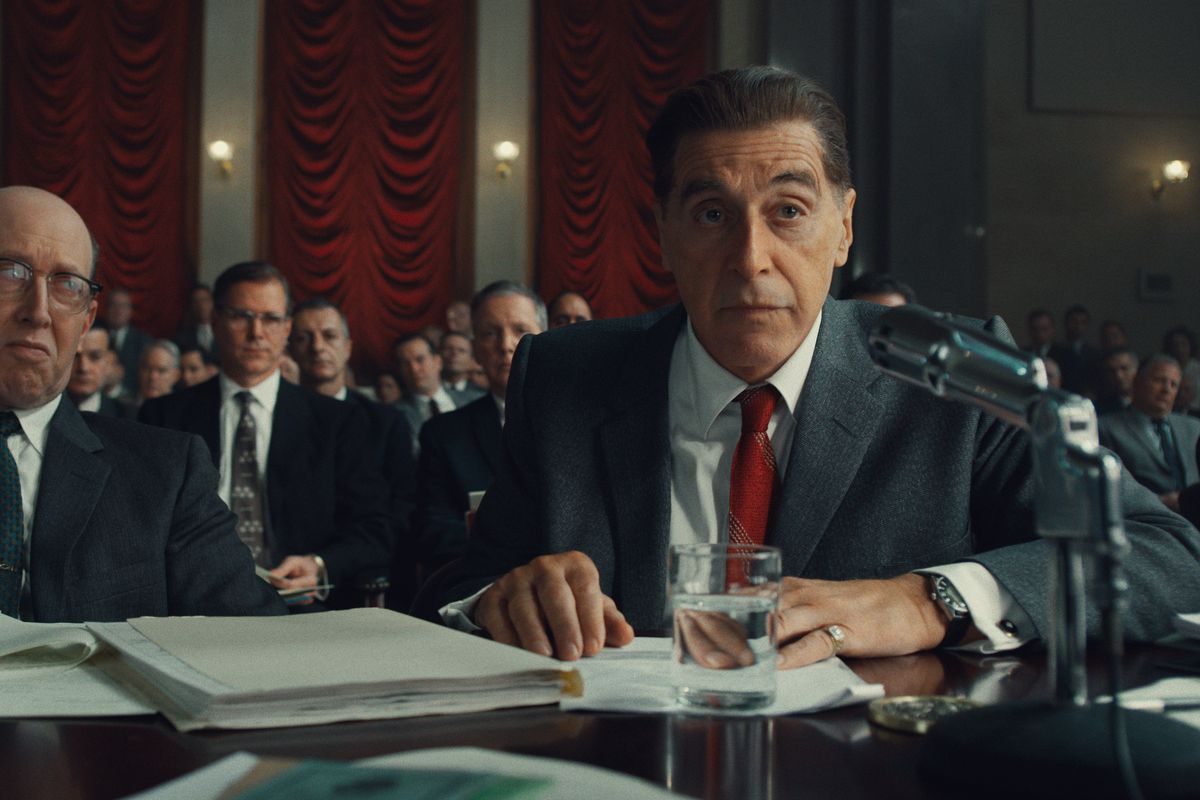
Explicit in The Irishman’s appeal is seeing the Scorsese Boys (De Niro, Pesci, Keitel) back together again, with their most substantial material in decades. At 79, Al Pacino is somehow only just joining this club, in addition to reuniting with De Niro for the first time since the late-aughts relic Righteous Kill. Despite first appearing near the one-hour mark, Pacino’s performance as midcentury labor lightning rod Jimmy Hoffa is The Irishman‘s star attraction. While no longer capable of his famous Dog Day, full body swagger—despite the $160 million production’s best efforts—Pacino’s loudest moments are verbal and invariably comic, like when he excoriates his underlings or perfects a Larry David-esque shtick over “sit down” etiquette. That said, Pacino’s most poignant gestures come when his age sneaks in, when frailty unsettles the image of Hoffa the power broker and Pacino the New Hollywood hotshot. Hoffa’s doting kindness towards Peggy, Frank Sheeran’s daughter, reveals a grandfatherly side to the character and star, an oasis of beaming smiles and untroubled eye contact in an otherwise backhanded milieu. Pacino too endows the film’s central relationship between Sheeran and Hoffa with its ultimately tragic force. From the way he stretches out, “They wouldn’t dare,” to his fateful glance before entering the 1977 Mercury Marquis, Pacino best embodies the conflict between trust and knowledge, love and ruthlessness, solidarity and self-interest, that defines the film’s complicated worldview. — ZACH ZAHOS
Directing
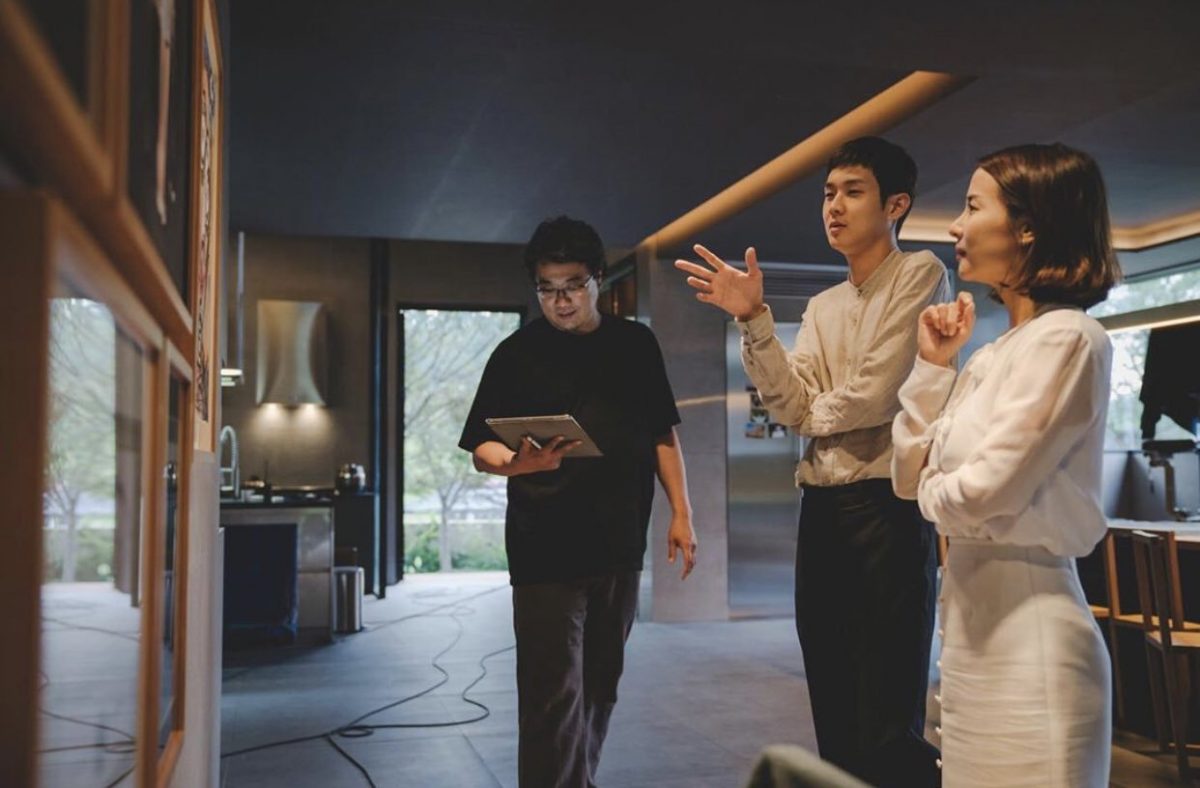
- Bong Joon-ho, Parasite
- Céline Sciamma, Portrait of a Lady on Fire
- Greta Gerwig, Little Women
- Josh and Benny Safdie, Uncut Gems
- Lulu Wang, The Farewell
The job of a film director includes a little bit of everything, and Bong Joon-Ho’s work bringing the class war satire of Parasite to life is a triumph across the board. He must control tone and make the film’s shifts in emotion and energy seem natural and fluid; given how many different tonal registers take pace in Parasite, from broad comedy to violent thriller, that’s already a miraculous achievement by itself. He makes decisions about how the camera will showcase the film’s outstanding sets, and how the characters will be positioned in front of the camera; the emphasis on the well-appointed emptiness of the rich family’s house in contrast to the cluttered closeness of the poor family’s basement apartment is crucial to the film’s satire, and the long take that plunges us into the subterranean depths of the film’s second half is among the year’s finest single shots. He keeps the pacing tight without being rushed, leading to a 132-minute feature that skips quickly through that running time. And, of course, he’s responsible for guiding all of the actors towards their shared destination, helping them to carefully balance cartoon caricatures with strong, sympathetic human emotions, idle rich and desperate poor alike. — TIM BRAYTON
Writing (Adapted Screenplay)
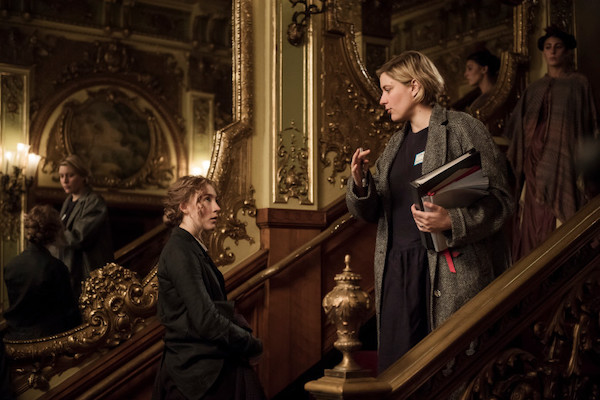
- Greta Gerwig, Little Women
- Steven Zaillian, The Irishman
- Christian Petzold, Transit
- Lulu Wang, The Farewell
- Micah Fitzerman-Blue & Noah Harpster, A Beautiful Day in the Neighborhood
Did we really need a seventh filmic adaptation of Louisa May Alcott’s absurdly influential novel Little Women? The answer, courtesy of Greta Gerwig, is an overwhelming “Yes, no question.” Gerwig’s latest iteration is the most radical, fudging with the chronological timeline of the book and uncovering innovative ways to portray and even deepen the heart-wrenching developments that have moved readers for over 150 years. This intermixing of the past and present is an emotional breakthrough: the sequence involving the novel’s most infamous plot development is enhanced by Gerwig’s uncomfortable parallels and expansive use of time, with Beth’s initial illness, her untimely death, and Meg’s melancholic marriage approaching something of the totality of life’s feelings. It is an intellectual breakthrough as well: this is an insightful story about stories—and particularly this oft-told story—that empowers authors and readers alike without ever diluting life’s hardships or callousness, and I like to think Gerwig’s brave, novel use of memory and time would have found a proud supporter in Alain Resnais. It is, perhaps most of all, an act of true love: Gerwig shares the ambitious breadth of Alcott’s work with a new generation, but she is not beholden to the original—she treats it with the respect and intrigue it deserves, pushing and pulling and taking apart and altering the classic story in a way only an avid (and extremely adept) reader could. As Jo remarks to Laurie at one point, perhaps parroting Gerwig’s decision to adapt the story in this fashion, “You’ll see that I’m right, eventually, and you’ll thank me for it.” And here we have. — JJ BERSCH
Writing (Original Screenplay)
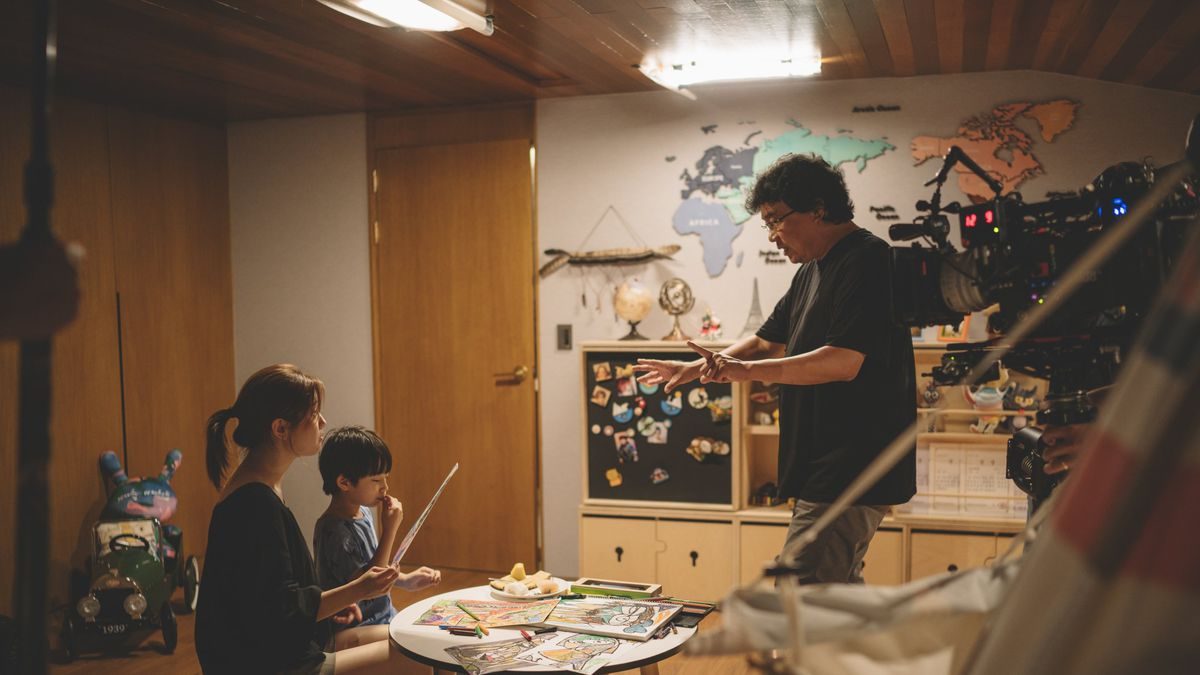
- Bong Joon-ho & Han Jin-won, Parasite
- Céline Sciamma, Portrait of a Lady on Fire
- Quentin Tarantino, Once Upon a Time… in Hollywood
- Noah Baumbach, Marriage Story
- Ronald Bronstein, Josh Safdie & Benny Safdie, Uncut Gems
Parasite has not only taken the Playback Awards by storm, it’s had remarkable success with audiences, critics, and the broader awards circuit. These accolades feel special precisely because of what Bong Joon-ho pointed out in his Golden Globes speech: namely, American audiences tend to shy away from subtitles and the broader tradition of global cinema. But the fact that Parasite has broken through these barriers and speaks to so many different audiences says something about the urgency of its story. We find ourselves in a moment in which economic disparity and structural inequality has reached a point of extreme transparency throughout the world, a situation that our media has obsessively interrogated to varying degrees of success. Indeed, you could throw a rock at the 2019 film catalog and find an “edgy” class critique, from the bloody revenge-fueled Ready or Not to the serpentine whodunnit Knives Out. Still, Parasite has distinguished itself from the rabble by not just condemning the greed of capitalism but also exploring its allure. And as the script deftly shifts from a grifter thriller to a surreal horror film, the audience can then feel the corrupting influence of that desire for affluence and what that brings out in each of the characters. Ultimately, condemnation is easy and empathy is hard. Parasite’s script takes the harder path. — JACOB MERTENS
Documentary Feature
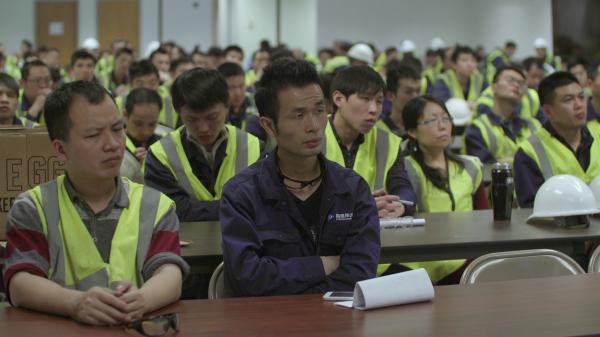
- American Factory
- Rolling Thunder Revue: A Bob Dylan Story by Martin Scorsese
- Apollo 11
- HΘMΣCΘMING
- Los Reyes (tie)
- Black Mother (tie)
A slow-burn portrait of a workplace sliding from the enthusiasm of a grand opening into daily-grind disagreements, Julia Reichert and Steven Bognar’s American Factory builds to a nail-biting unionization vote in the mold of a classic Direct Cinema crisis narrative. The story of a Chinese-owned factory starting up in a closed GM plant in Ohio involves an ambitious range of geopolitical and economic issues for a single feature film, but Reichert and Bognar keep the material grounded through their focus on the workers and their hesitant realizations about just how much things have changed. This may seem like a marked shift from the leftist energy of Reichert’s early interview and archive-based films, but American Factory’s verité style allows the filmmakers to navigate a tangled situation with sensitivity and urgency. — MATT ST. JOHN
International Feature Film

- Portrait of a Lady on Fire (tie)
- Parasite (tie)
- Pain and Glory
- Transit
- Atlantics
There’s a lot to love about Portrait of a Lady on Fire. From Céline Sciamma’s masterful directing and sparse yet powerful script to the performances of Noémie Merlant and Adèle Haenel, Portrait exudes a minimalist confidence—epic, yet contained. This is not even to mention the color-rich compositions and gorgeous cinematography of Claire Mathon (nominated twice this year, for this film and the incredible Atlantics). Yet Portrait is more than the sum of its parts. Paradoxically, the film is a universal investigation of affection, memory, and relationships, but also a deeply personal portrayal of feminine intimacy and a couple’s lost love. The film’s intertextuality and striking imagery allows it to play on multiple levels. It is perhaps no surprise that Sciamma and Haenel were long-time partners, and to viewers in the know it is easy to imagine this relationship impacting Portrait. Even Sciamma can’t be sure. She admitted in an interview with Indiewire, “people know that we had that bond and that we still have a bond even though this is over for years. Maybe the film is performing this idea or maybe our lives are giving the dynamic to the film. I will never know. It’s hard to know.” Whatever the case, Portrait of a Lady on Fire will affect viewers’ understanding of themselves and their relationships for a long time to come. — TOM WELCH
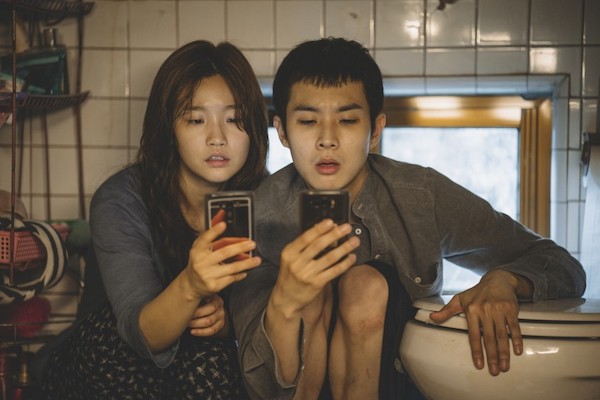
“Once you overcome the one-inch tall barrier of subtitles, you will be introduced to so many more amazing films.” So said Bong Joon-Ho, via a translator, upon Parasite’s Golden Globes win for Best Foreign Language Film. But to those that have had the pleasure of viewing Parasite, such a sentiment was already crystal clear. His works may (mostly) be in Korean, but Bong’s wielding of the cinematic language is as accessible and exciting as almost any filmmaker working today. This year, the Academy has decided to change the erstwhile “Best Foreign Language Film” to the newly-dubbed “Best International Film”, and Parasite is poised to become the inaugural winner of the newly named award. It feels like an appropriate win for the new category, because little of Parasite’s narrative or style feels obviously “foreign.” The dynamics of the Kim family are immediately recognizable to anyone, despite one’s nationality or economic background, and Bong’s visual language recalls the clear cause and effect logic, spatial organization, and deliberate, ratcheting tension of the best of the Hollywood tradition. Bong’s searing class satire has transcended American audience’s unspoken stigma against foreign films and become embraced by not only critics and audiences, but by the very members of the upper classes it so mercilessly skewers. — LANCE ST. LAURENT
Animated Feature Film
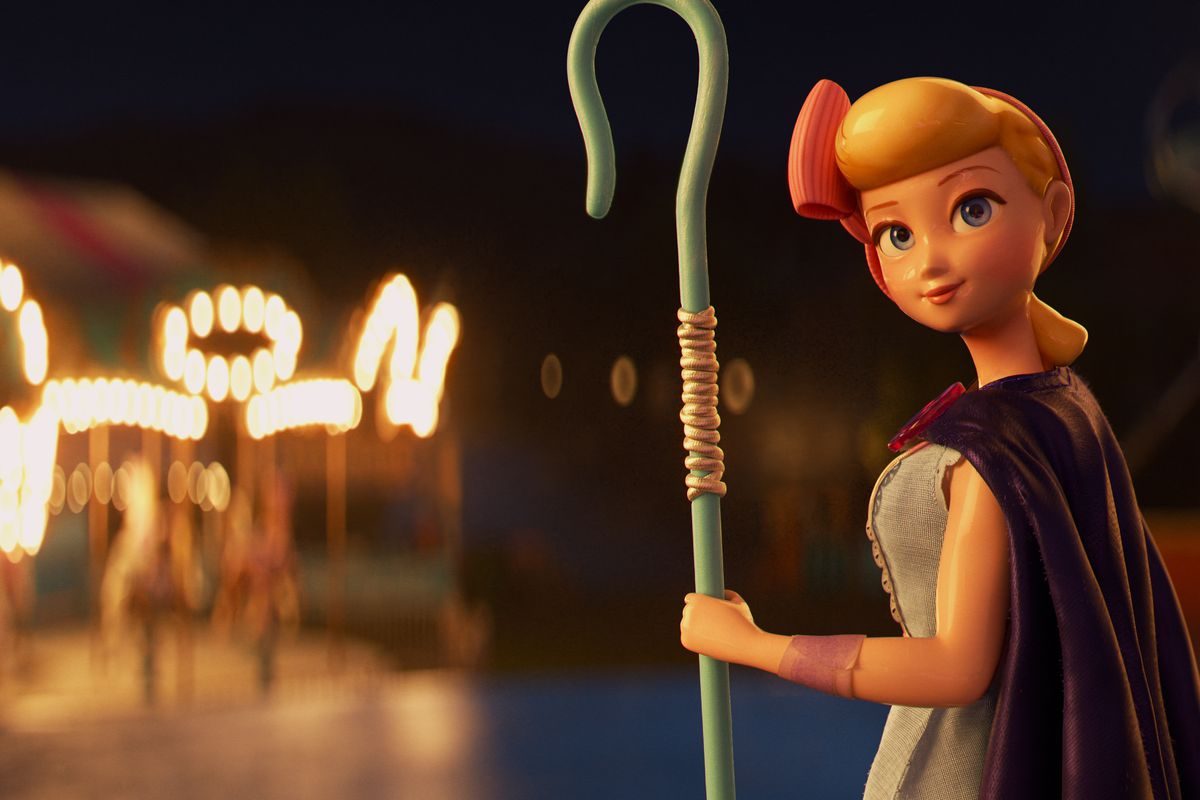
- Toy Story 4
- How to Train Your Dragon: The Hidden World
- Missing Link
- Penguin Highway
- Weathering with You
In one of the more surprising twists offered by a 2019 Hollywood film, a $200 million sequel managed to feel charmingly scaled back. Toy Story 4 keeps up the existential dread and thrilling miniature set pieces that mark the high points of Pixar’s longest franchise, but Woody and the gang spend most of this entry within the same fifty-yard area, using an impressively lengthy list of transportation methods (running, gliding, driving a skunk car, etc.) to catch up with friends new and old in a small-town carnival and a neighboring antique shop. Fresh characters Forky, Ducky, and Bunny more than earn their keep with a barrage of winning jokes, and a pants-wearing Bo Peep returns, ditching the dull confines of her lamp (but fortunately not her sheep) to tempt Woody into a kid-free life he never could have imagined. Toy Story 4 doesn’t reinvent the wheel, but when the formula is this much fun, why would you? — MATT ST. JOHN
Cinematography
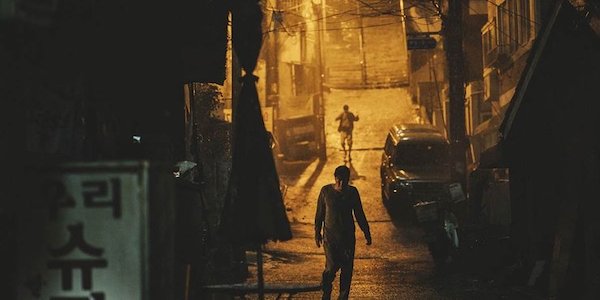
- Hong Kyung-pyo, Parasite
- Claire Mathon, Portrait of Lady on Fire
- Jarin Blaschke, The Lighthouse
- Darius Khondji, Uncut Gems
- Claire Mathon, Atlantics
For a film so focused on the separation of spaces and the secrets they hold, it’s fitting that Parasite contains some of the most meticulously composed shots of the year. Cinematographer Hong Kyung-pyo’s visual rhymes and references appear throughout the film, like the curiously emphatic overhead shot of hot sauce dripping over a pizza, repeated just a few scenes later when Kim Ki-taek drips hot sauce on a napkin to leave “blood” in the Park family’s trash can. Parasite contains many striking images, but the pitch-black darkness of the kitchen doorway was instantly seared into my memory. A handful of shots center this doorway, most notably Park Da-song’s flashback of a ghost in the family home. Seen from the perspective of a child, Geun-se’s wide-eyed rise from the bottom of the frame shows how an ordinary man moving through an ordinary space can be transformed into a horrific image, with careful framing and the right amount of shadow. – MATT ST. JOHN
Film Editing
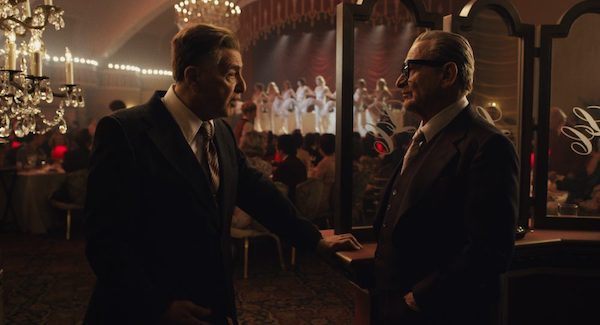
- Thelma Schoonmaker, The Irishman
- Ronald Bronstein & Benny Safdie, Uncut Gems
- Yang Jin-mo, Parasite
- Nick Houy, Little Women
- Nicholas Monsour, Us
For all the hoopla around its 3.5-hour runtime, The Irishman moves at an admirably fast clip, which is par for the course for Martin Scorsese’s longtime editor Thelma Schoonmaker. The first two hours of The Irishman, like the entirety of Goodfellas, are a breeze, charting Frank Sheeran’s rise as a hitman for the Philadelphia mafia and enforcer for Jimmy Hoffa. Schoonmaker keeps individual scenes short and vital, with a feel for the improvised rhythms the actors discovered on set and an ear for a memorable punchline (a favorite being Russell Bufalino’s “You know why God made heaven so high?”). Just over two hours in arrives the film’s centerpiece, set in a grand ballroom honoring Sheeran. The sequence lasts about 15 minutes, with three crucial, cryptic conversations between Hoffa and Bufalino, Bufalino and Sheeran, and finally Sheeran and Hoffa. Schoonmaker emphasizes all the right notes for the plot’s developments to be unmistakable, while loosening the film’s pace and setting up the more funereal tone that will come to dominate the rest of the film. Schoonmaker’s genius comes firstly in her facility with classical continuity, making her more visible, avant-garde gestures—e.g., the disjunctive cut during Sheeran’s phone call to Hoffa’s widow—all the more gut-wrenching. — ZACH ZAHOS
Music (Original score)
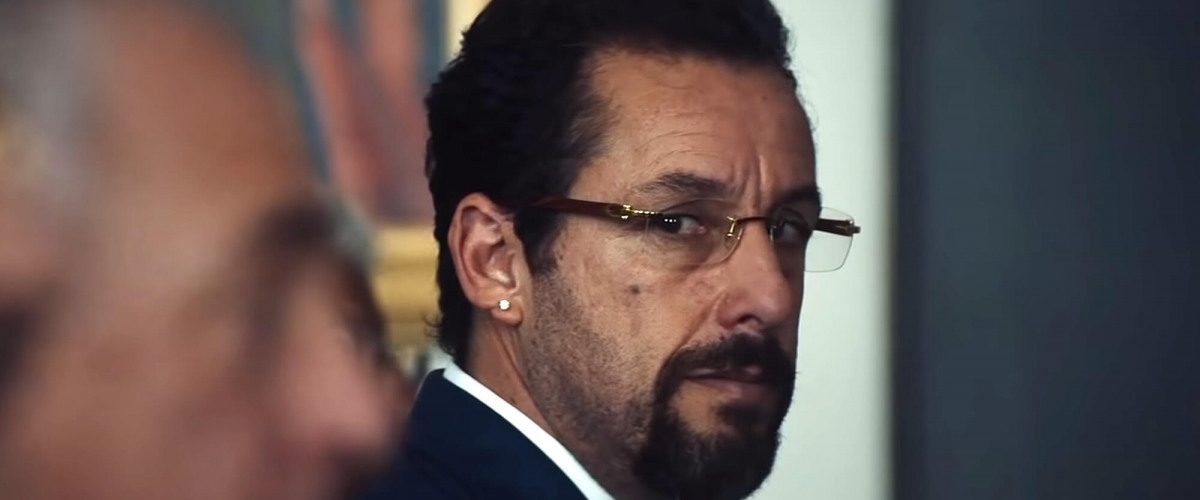
- Daniel Lopatin, Uncut Gems
- Alexandre Desplat, Little Women
- Michael Abels, Us
- Randy Newman, Marriage Story
- Jung Jae-il, Parasite
Did any movie last year feature an opening sequence as audacious as the one that inaugurates Uncut Gems? While most of the Safdie Brothers’ latest hysterical pressure cooker concerns New York City streets and the captivating eccentrics who predominate them, Gems opens in the unglamorous, glamor-extracting mines of Ethiopia. An accident unsettles the labor force, crippling some, but amidst the chaos two miners stumble upon serenity: a ragged but majestic slice of harsh rock and kaleidoscopic black opal. Darius Khondji’s roving camera swoops towards and then, shockingly, into the titular uncut gem, revealing a minuscule universe of cosmic beauty. The droning beep of hospital machinery faintly intrudes upon this winding, ethereal sphere as intergalactic travel seamlessly transitions to the inside of Adam Sandler’s polypy colon, intrinsically linking the tensions and dangers of extracting the gem to those of its exploitation. Wild stuff! But it works. And it works, in large part, thanks to Daniel Lopatin, the prolific electronic musician who also goes by Oneohtrix Point Never. Lopatin backs this sequence with the eight-and-a-half minute “The Ballad of Howie Bling,” an epic of operatic Playstation startup music, otherworldly kankyō ongaku, and kitschy vocal breakdowns that would make Manheim Steamroller blush. In the same way that the film’s opening moments expand the viewer’s conception of the scope of Uncut Gems, Lopatin’s music consistently pushes the film outward, increasing it in scale and significance, bravely and bluntly altering the reach of the Safdies’ images. In fact, it feels silly to have said that Lopatin “backs” the opening sequence, or any sequence at all: his music is placed comically high in the already overstuffed sound mix, its presence ever-obvious. Conventional wisdom states that film scores work best when you don’t notice their emotional appeals and manipulations at all, but Lopatin has no time for conventional wisdom. His score still traffics in the pulse-quickening anxiety of his collaboration with the Safdies on Good Time (see: “School Play”), but Gems is broader, more intentionally discordant, and often quite funny (see: “F*ck You Howard,” an absurdly gigantic farce that soundtracks a Weeknd-induced lovers’ quarrel). Lopatin’s score is a thrilling, heightened, and varied set of obscure sounds, sharp edges, and the occasional warm bath of synths; it represents a level-up for an experimental composer already at a level entirely his own. — JJ BERSCH
Music (Original Song)
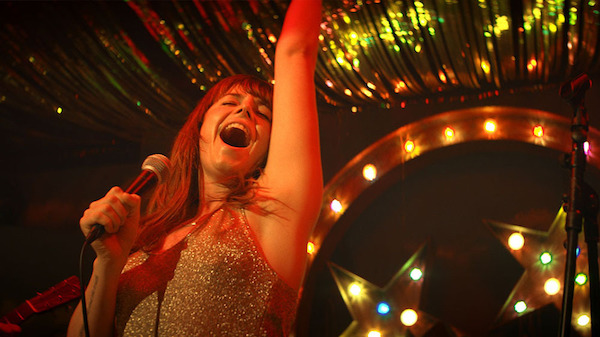
- “Glasgow,” Wild Rose
- “Uniform On,” The Lonely Island Presents: The Unauthorized Bash Brothers Experience
- “I’m Gonna Love Me Again,” Rocketman
- “Catchy Song,” The Lego Movie 2: The Second Part
- “Soju One Glass,” Parasite
Wild Rose tells a story that, on its face, could be quite rote, if still charming. Rose Lynn (Jessie Buckley) is a woman who feels she has been born in the wrong place and aspires to a stardom that will take her out of it. She is a Scottish working class woman, but she dreams of becoming a country star in Nashville. However, a classic rise to fame story is made more complex by the fact that Rose Lynn is also a mother, and the film comes to a nuanced conclusion on how a woman can aspire to a rich life while remaining tied to her roots. The culmination of which is Buckley’s barn-burner performance of “Glasgow,” a song that encapsulates Rose Lynn’s emotional journey and the ways in which the aspects of herself she once thought of as warring are more powerful together. It is a song that is successful in its own right but works even better once viewed within the context of the film – a true mark of a deserving original feature song (no songs that just get tacked onto the credits for me, thankyouverymuch). And yes, a not insignificant part of my vote in this category was swayed by the incredible story of how Mary Steenburgen came to write this song – Oscar campaign narratives work! But mostly, I just remember how moved I was when Buckley’s voice swells and then bursts at the song’s cathartic chorus and it came down to the fact that no musical moment in film this year hit me quite like “Glasgow” did. — LAURA SCHUMACHER
Sound Editing
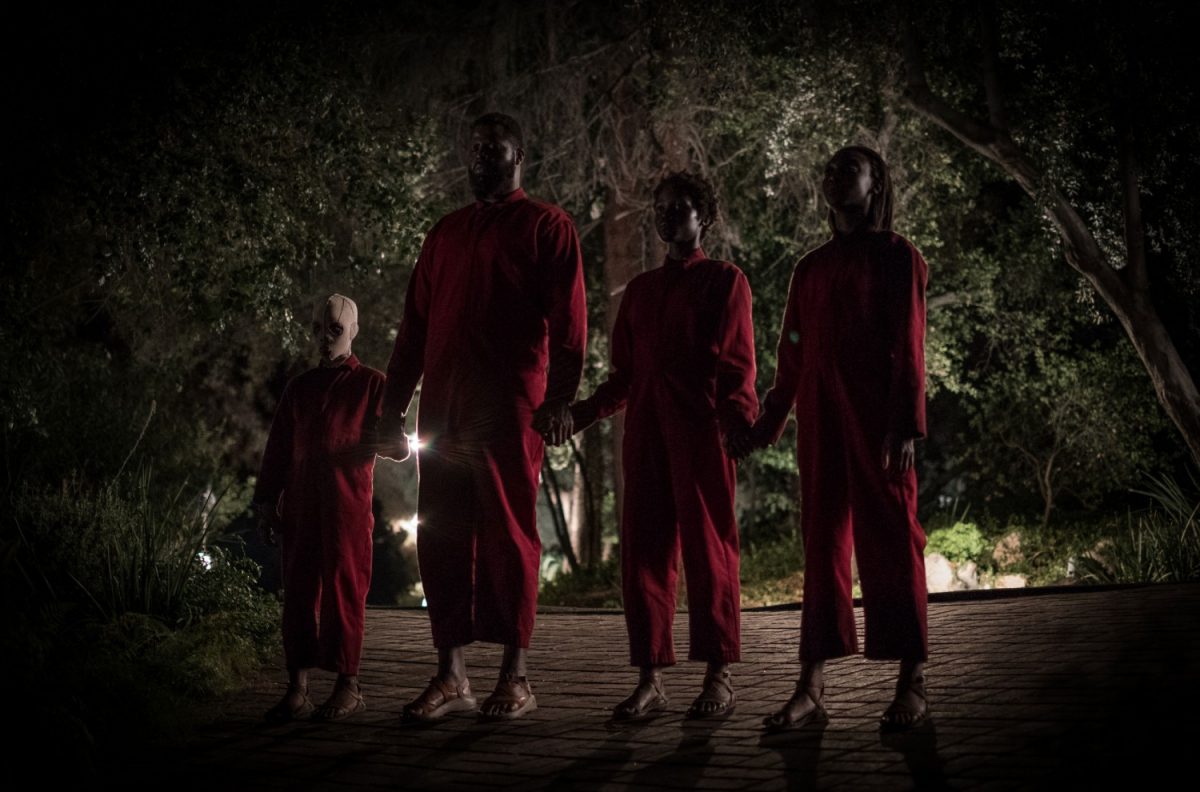
- Trevor Gates, Us
- Brad Semenoff, Ad Astra
- Oliver Tarney & Rachael Tate, 1917
- Choi Tae-young, Parasite
- Wylie Statemen, Once Upon a Time… in Hollywood
From scissor snips and match strikes to the wounded Kitty’s gurgling as she drags herself across the floor, Us’s sound effects are as unsettling as every other element in the year’s most effectively twisty horror film. The excellent, often surreal score has been rightfully acclaimed, but the masterful home invasion sequence also showcases the use of silence and ambient sounds, with disorienting, unidentifiable noise replacing the music at key points. Like any great horror film, Us trains you to listen carefully in its moments of highest tension. It highlights every one of Red’s light, deliberate footsteps as she glides through the living room before turning to her prey, making the crash of shattered glass even more of a shock (and giving an excuse to scream, as if you need one). The soundscapes in Us are filled with subtle choices and precise effects, ensuring that you’ll get all the unease you could hope for, even when you look away. – MATT ST. JOHN
Sound Mixing
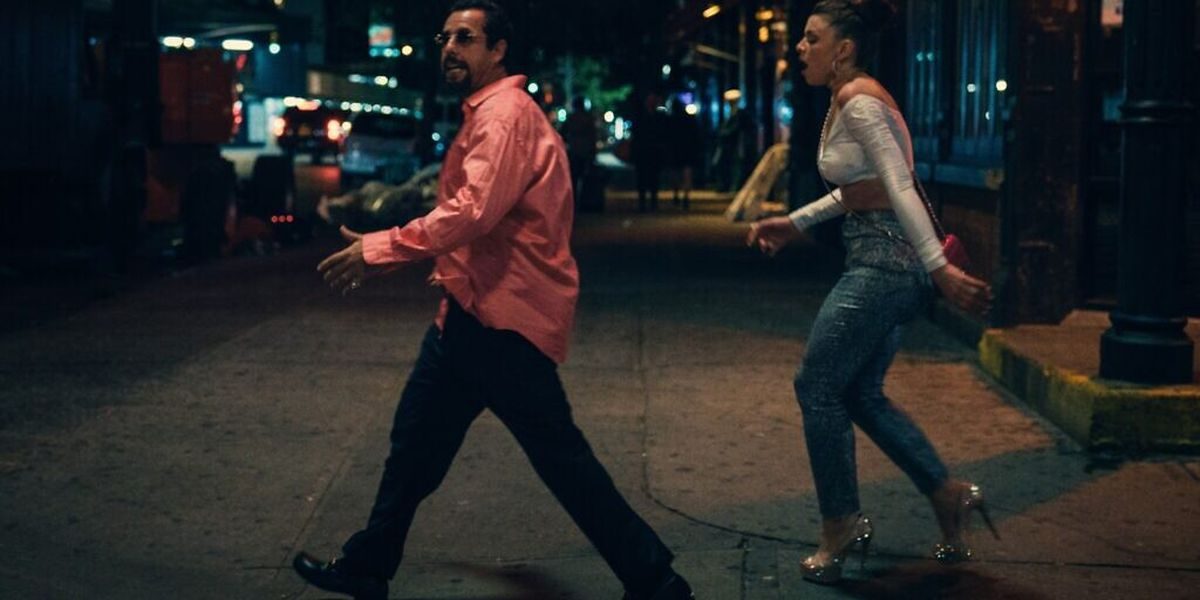
- Anton Gold, Helmut Scherz & Michael Sterkin, Uncut Gems
- Michael Minkler, Christian P. Minkler & Mark Ulano, Once Upon a Time… in Hollywood
- Ron Bartlett, Pud Cusack & D.M. Hemphill, Us
- Paul Massey, David Giammarco & Steven A. Morrow, Ford v Ferrari
- Olivier Do Huu, High Life
The general consensus of the Telluride Film Festival’s older demographics was that Uncut Gems was too damn loud. And loud it is – just the other day, I could tell that the normally quiet people who live above me were watching the film because its soundtrack came through the vents so clearly. But to oversimplify its sound design as only “loud” would be a great disservice. As Howard walks an increasingly unstable tight rope act, the film’s sound reflects the ever-shifting power dynamics at play. Individual voices and sounds are either highlighted or washed out among the cacophonies of noise that flood most of the film’s major scenes. Sound and music frequently, purposefully overwhelm Uncut Gems, but these moments are given more power because the film is also willing to pull back, leaving Howard alone with the consequences of his actions. One particular instance that stuck with me after visiting the film a second time comes when Howard stands in the kitchen of a family home to which he no longer belongs. Rejected by his wife and his daughter, we get to see him silent for one of the few times in the film; it doesn’t last for long, however, as Meek Mill’s “Amen” begins to fade in. Gems then cuts to a high-angle shot of Howard in a club, with the song’s reverb now cranked so high that the space feels cavernous. Even among the packed crowd, the stark difference in sound reflects Howard’s growing isolation and desperation. — DILLON MITCHELL
Production Design
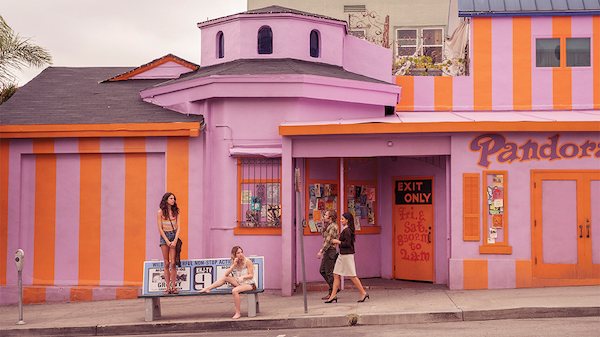
- Barbara Ling & Nancy Haigh, Once Upon a Time… in Hollywood (tie)
- Lee Ha-jun & Cho Won-Woo, Parasite (tie)
- Jess Gonchor & Claire Kaufman, Little Women
- David Crank & David Schlesinger, Knives Out
- Jade Healy & Merissa Lombardo, A Beautiful Day in the Neighborhood
The “Hollywood” of Quentin Tarantino’s Once Upon a Time… in Hollywood is a project of resurrection and reimagining. It is a dinosaur resuscitated from its fossilized amber coffin using frog-laced DNA. It is a world map from an Assassin’s Creed game, detailed enough to feel real but optimized enough to never bore. It is the Los Angeles of a paradoxically fuzzy photographic memory of the lyrics of a great song. Production designer Barbara Ling backs me up: “We didn’t worry about being a little off… Instead, it was all about, how do we encapsulate the feeling of all the different genres of people in that era?” Hollywood is a movie of faithful reconstructions of entire busy streets for five seconds of screen time. It is a film where movie theater marquees and radio waves are maniacal in their historical exactitude. But it is also a movie of purposeful forgery, of exaggerated colors and elaborate fake films and television programs. It is a movie that sets an ostentatious scene at the Playboy Mansion in Los Angeles despite the inconvenience of that real-life infamous locale not having opened its doors until two years after the events of the film. It is a lucid dream, a credible delusion, a vividly wrought happy ending where it’s always 1969, even when it’s 1971, or 2019. It is a big, bonafide motion picture. — JJ BERSCH

I’m sorry Once Upon A Time… did any of your houses get written up in Architectural Digest? Kidding aside, while Parasite works on every level as a film, none of it would work remotely as well without Lee Ha-jun’s ingenious production design. The class conflict that drives the film’s story and themes is literalized in the living conditions of its characters. The wealthy Park family’s large, modern home is the most eye-catching of the set pieces. The design reeks of wealth, but its harsh lines and almost sterile cleanliness also reveals how that wealth functions as a guard against anything that may disturb their pristine, untroubled lives. And while this untouchable wealth sits atop a hill, the other characters must dwell in various levels of a subterranean existence. And while the Park home is the flashiest design, Jun’s work on the Kim family’s “half-basement” apartment is no less genius. If the Park home is austere, the Kim home is its messy and cluttered counterpart. There are odds and ends everywhere, the ceilings are low, every surface has the appearance of wear and tear, and every room is so small and cramped it feels as though the walls may literally close in upon the Kims. And this is why the production design is so impressive: not just because each set piece on its own has an incredible level of detail and tells us much about the story and characters, but that like the film itself, an even richer reading comes when comparing these homes that are at once polar opposites and inextricably linked. — LAURA SCHUMACHER
Makeup and Hairstyling
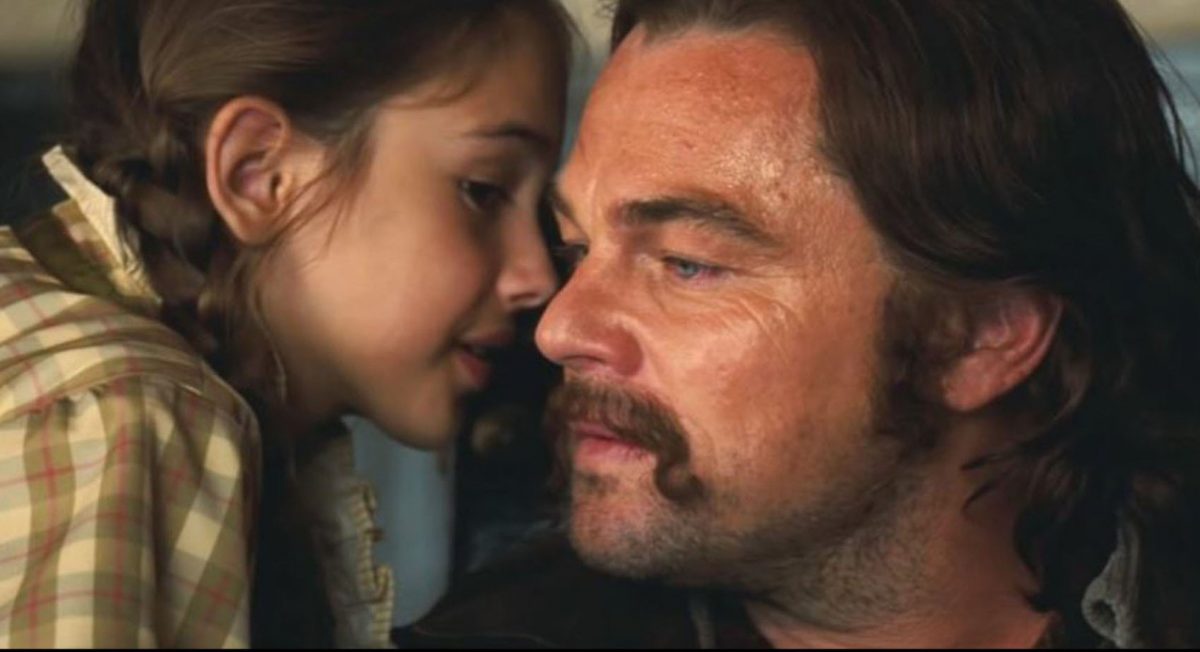
- Janine Rath & Heba Thorisdottir, Once Upon a Time… in Hollywood
- Sean Flanigan & Nicki Ledermann, The Irishman
- Dolly Hernandez & Gianna Sparacino, The Beach Bum
- Jeremy Woodhead, Judy
- Camille Friend & Scott Wheeler, Us/Ana Lozano & Sergio Pérez Berbel, Pain and Glory
Rick Dalton (Leonardo DiCaprio) is not used to having his face obscured in the roles he plays. Even in the downslide of his career, Rick maintains that audiences want to see him – his face, unblemished, beaming villainously at the camera. But when he takes on a pivotal Western baddie role in the middle act of Once Upon a Time… in Hollywood, he is forced out of his comfort zone to adorn some of the most egregious late 1960s make-up imaginable. Looking more like Dennis Hopper (whom Rick uses as a slur to young Mansonites later in the film) in Easy Rider than a traditional cowboy, Rick is uneasy trying to find his character; insecure in his long hair and long mustache, and caked in dirty make-up. But as Rick continues to delve into the role and accept his look, he starts to exhibit true acting prowess the likes of which we, as viewers, had maybe thought he wasn’t capable. By giving into his own insecurities and embracing his make-up disguise, Rick discovers that he has wells of talent and feeling he previously was fearful of unleashing on set. Through this make-up, Rick becomes a completely different acting animal. It is this moment where a 1950’s TV has-been could possibly become a dangerous, charismatic performer in the quickly approaching New Hollywood. — WILL QUADE
Costume Design
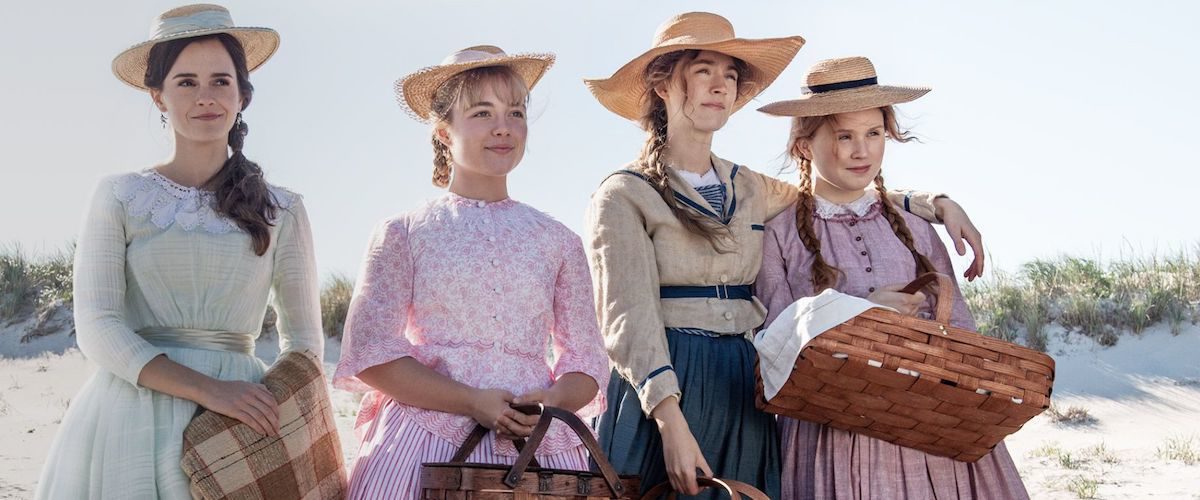
- Jacqueline Durran, Little Women
- Arianne Phillips, Once Upon a Time… in Hollywood
- Heidi Bivens, The Beach Bum
- Miyako Bellizzi, Uncut Gems
- Mitchell Travers, Hustlers
As I wrote in last year’s post on the production design of The Favourite, it is sometimes necessary to forgo imagined historical accuracy in exchange for satisfying, evocative, and story-driven design. In doing so, design can even ask us to interrogate how we understand history. Such is the opinion of Jacqueline Durran, a costume designer with a diverse resume who might be most well-known for winning the Oscar for designing the costumes for Anna Karenina, but also for designing the iconic green gown worn by Keira Knightley in Atonement. The costumes in Little Women were in fact taken from the American Victorian era, but from inspiration that was unlike what most viewers would imagine. Durran notes that (https://www.newyorker.com/culture/on-and-off-the-avenue/how-jacqueline-durran-the-little-women-costume-designer-remixes-styles-and-eras) “in fact, there were lots of ways to be a Victorian, but we tend to reproduce the same way, over and over again.” Here costume design becomes an act of historical re- and counter-interpretation, as well as a connection to the imagined realities of the bohemian March family and the lived realities of the Alcott family from which Durran took inspiration. What’s amazing about her costumes is their combination of aesthetic beauty with a specific understanding of how they would function in the characters’ lives—how we can appreciate the subtle character choices each costume signifies, from Jo’s libertine masculine-forward attire to Amy’s high society gowns. Durran’s designs exemplify the notion that costume labor is not simply aesthetic but also a storytelling mechanism in and of itself. — TOM WELCH
Visual Effects
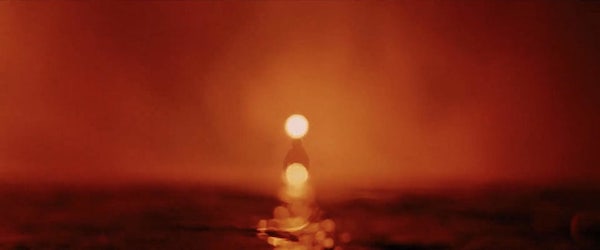
- Ad Astra
- Alita: Battle Angel
- The Irishman
- Gemini Man
- Detective Pikachu
The cinema of James Gray seems to always encase its characters in amber. The slow, feline camera moves Gray employs slink hand in hand with the almost obsessively mannered performances of his cast to craft deliberate, unhurried narratives truly uncommon in American cinema. Gray’s aesthetic could not find a better locale to flex its muscles than in the vastness of space, where slowness and deliberate action take on a genuine cosmic weight through the simple movements of Brad Pitt and company. Featuring the most awe-inspiring visual effects since Interstellar, Gray’s mission could not be more apparent than when Pitt is forced to fly through space and a meteor shower using a door as a shield to get back to his spaceship. With Pitt as one tiny speck in a vast ocean of galactic sorrow, a climax of high-speed action is turned by Gray and his visual effects team into a quiet, heartbreaking denouement. The deep blue of Neptune, the weightless flying through the cosmos, all is rendered through deep mourning in which the slowness of movement turns space into another canvas for Gray’s continuing exploration of quiet human suffering. — WILL QUADE

